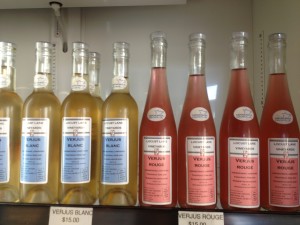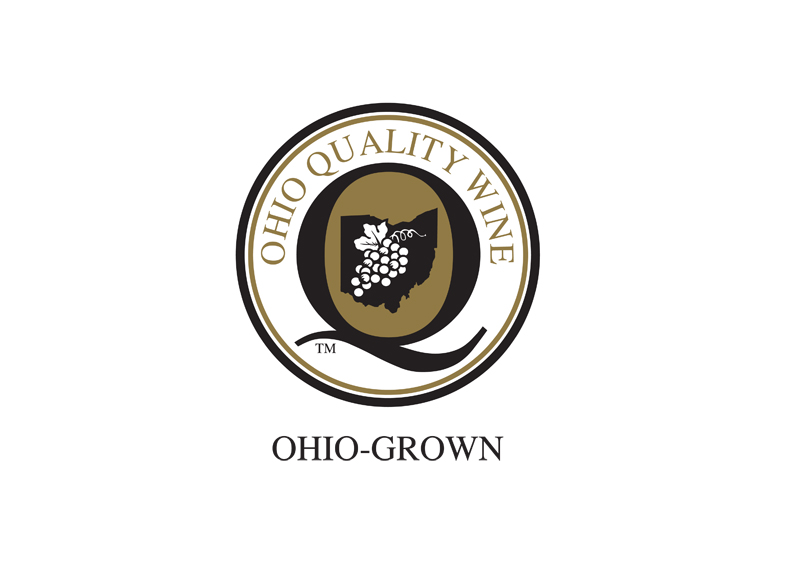Cold Hardy Grapes Make Vivacious Verjus
The question of what to do with wine grapes from cold climate growing regions has resulted in some wonderful solutions. The most famous example of ingenuity is the French. They use the high acid grapes from the coldest grape growing region in their country, Champagne, to make a beverage that is known worldwide.
Now a Minnesota grape grower, Chad Stoltenberg, is expanding the use cold climate wine grapes for the manufacture of verjus. Verjus is not wine, it’s a mildly acidic flavoring used in the high-end culinary industry. Since verjus is grape juice- no alcohol included- it’s subject to FDA regulations that govern food safety.
“It’s about 2.9 pH so nothing foreign can grow in it, but we’re still a grape juice producer in the eyes of the regulators,” Stoltenberg said.
Verjus may be the highest “value added” product made with any Minnesota fruit. At his Locust Lane Vineyards, Stoltenberg takes a raw material- hybrid wine grapes- that go for around $1,200 a ton and transforms them into a beverage that sells for over $200 a gallon. That’s assuming the verjus is sold in 375 ml bottles for around $20 which is the market price for quality juice. Stoltenberg said that 180-200 gallons of verjus can be produced with a ton of grapes.
While verjus is made from wine grapes, the verjus harvest occurs much earlier. Stoltenberg picks most of his grapes at 10 to 14 degrees brix, which is about half the sugar content of a ripe wine grape. He will even occasionally go down to 8 brix.
Since verjus grapes are not supposed to be fully ripe, harvesting is usually complete by August 1, Stoltenberg said. In contrast, some Midwestern wine grapes are allowed to hang until almost the first frost to capture every last ray of sunlight.
Harvesting early has several advantages. First, there is less need for bird netting since birds prefer ripe grapes. Stoltenberg also thinks he saves three “spray trips” each year compared to wine grape growers because mold and insects have less time to get established. Grape vines that are harvested early also survive winter in better condition and that means more fruit for next year.
The Stoltenberg family has been farming in Southwest Minnesota since 1931. His father grew soy and corn and raised cattle. After his dad stopped farming, Chad experimented for a couple of years by using a former pasture to grow grapes.
From 100 vines in 2005, Locust Lane has now grown to a five acre vineyard. Frontenac Gris takes up the largest block, but Stoltenberg also grows Marquette, Brianna and St. Pepin in equal amounts. The blend of these distinctive cold climate grapes is what give Locust Lane Verjus its unique flavor and aroma.
Verjus is not a vintage year product. In other words, you won’t see a harvest year on the label. The purpose of verjus is to heighten other flavors in food, not to call attention to itself. Quality verjus also does not interfere with the flavor of wine when they are consumed together.
Restaurant chefs are the primary market for verjus and they mainly want a consistent product, Stoltenberg said. In St. Paul, Heartland Restaurant and Farm Direct Market chef Lenny Russo uses Locust Lane Verjus.
Stoltenberg is also expanding retail sales. During May, Locust Lane was selected as a vendor by Whole Foods and will be in the chain’s two new stores opening this summer in the Twin Cities. Stoltenberg said Whole Foods hopes to expand Locust Lane distribution regionally.
In addition, Locust Lane Verjus was the “top gift” under $50 in the December 2012 Minneapolis St. Paul magazine gift guide. Stoltenberg is now working to expand the Locust Lane brand footprint with verjus flavored jellies and nuts.
Verjus is also finding its way into high-end cocktail mixes and there are other potential uses, he said. According to a recent story in Bon Apetite, verjus was widely used in the Middle Ages and the Renaissance, but has become more popular in recent years for various kinds of dishes like salads, sorbets and stews.
Total production at Locust Lane has been around 400 gallons per year. Working with other Minnesota vineyards, Stoltenberg said that he wants to increase production to 1,200 gallons this year.
Locust Lane Verjus is manufactured at a licensed food production facility in St. Paul which is about 200 miles from the vineyard. Stoltenberg said the grapes are pressed at the vineyards and the juice is then transported by truck to the factory.
The verjus juice is initially run through a plate and frame filter which presents some challenges. Grapes that are picked early can be “mealy” and therefore more difficult to filter, Stoltenberg said. Next, the verjus is heated, then sterile filtered. It can also be flash frozen and stored for later bottling with no ill effects, Stoltenberg said.
“Part of what appeals to us about verjus is the relatively short time line for making the product,” Stoltenberg said, “the pressings are essentially the finished product except for filtering and sterilization.”
Compared to the number of global wineries, there are relatively few verjus makers. California, France and Spain are the largest producers. Stoltenberg credits Red Newt Winery in the Finger Lakes of New York for helping him acquire the knowledge to start Locust Lane.
Midwestern verjus makers include Tim and Julie Lyons on Washington Island in Wisconsin. Chaumette Winery in Missouri also produces a limited amount of verjus.
“We have a great local food culture in Minnesota,” Stoltenberg said, “I’m proud to say that my product is made from Minnesota grown grapes, many of which were developed by the University of Minnesota.”
Homepage photo: Chad Stoltenberg and his father, Lloyd, at Locust Lane Vineyards in Little Canada, Minnesota.






Thanks for the great article Mark. Just to clarify for your readers, we have our grapes pressed at a winery prior to finishing the processing and bottling at our commercial kitchen facility in St. Paul.
Cold climate grapes make some of the most unique wines and I can’t wait to try the Verjus “grape juice.” Thank you for sharing!
I really like many of the wines made from cold climate grapes.
Thanks for posting.